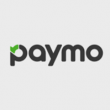

Onymos and Vapotherm have announced the formation of a development and commercialisation partnership. This partnership will help Vapotherm create a unique respiratory digital platform to meet its data visualisation and device management goals for the Vapotherm HVT 2.0 system in the acute care space as well as for future products in the home.
Through the Onymos Features-as-a-Service platform, Vapotherm accesses Onymos’ suite of Internet of Things (IoT) features — including Onymos Edge, Onymos Access and Onymos DataStore — to build a secure end-to-end solution to connect the HVT 2.0 fleet with the cloud. It consists of a GoLang-based “Gateway” application, an Angular web dashboard for remote device management and cloud storage for patient data. The solution is currently undergoing beta testing with select hospitals.
The HVT 2.0 system currently uses Vapotherm’s high-velocity therapy and has a large, intuitive touchscreen to display relevant clinical information at a distance (flow, FiO2, temperature, safety alarms, event log etc.). Connectivity provides clinically relevant information remotely to help medical teams make informed and confident decisions quickly.
“We continually look to provide our customers with innovative solutions to improve patient outcomes as evidenced by our recent HVT 2.0 launch and future home offerings. We believe that by adopting Onymos’ suite of IoT features into these products it will help medical teams make informed decisions quickly to help treat their patients and improve outcomes at a lower cost. This is huge for understaffed hospitals especially. It’s an honour to help our customers and to partner with Onymos to make our connected cloud solutions a reality – one that continues to enhance and adjust according to physician feedback and needs,” said Brian Lawrence, the chief technology officer at Vapotherm.
“We are proud to work alongside Vapotherm to help the company realise its data visualisation and device management goals for the HVT 2.0 system and future home product,” said Shiva Nathan, the founder and CEO of Onymos. “By leveraging multiple facets of our Features-as-a-Service platform, we are able to develop an extensive Internet of Medical Things solution that is both SOC 2 and HIPAA compliant 80 percent faster than the standard development timeline.”
The Onymos Features-as-a-Service platform is a pro-code platform that enables companies and organizations — such as medical device manufacturers, pharmaceutical companies, retailers, and education institutions — to achieve the speed, quality and value in their web, mobile and IoT application development and innovation. It has over 20 foundational app features and can be easily added to new or existing applications. The Onymos platform includes the UI/UX, security, help with compliance requirements, underlying logic that runs on the device, the server-side functions and integrations that process and store data in the cloud, and continuous updates. The Onymos platform also supports many of the other most popular frameworks for web and mobile application development.
Comment on this article below or via X: @IoTGN
March 21, 2024
Posted by: Magda Dabrowska

Kobai, has announced collaboration with Databricks. With this collaboration, joint customers can leverage insights of knowledge graphs with scalability and power of Databricks lakehouse platform. Kobai’s saturn platform is embedded directly in data layer, allowing organisations to query data without moving it from lakehouse, with W3C (world wide web consortium) and lakehouse open standards providing complete interactivity. (more…)
September 13, 2023
Posted by: Janmesh Chintankar

Knoxville, United States – Paymo, the project management, time tracking, and invoicing software, announced the launch of PM payments, an integrated platform that allows Paymo users to get paid online with a single click.
PM payments is a fully integrated, custom built payment solution that provides small and midsize companies with a simple and secure way to accept payments. Delivering invoices with “Pay Now” functionality at or near the time of service typically nets payment about two days earlier while simplifying the process with one click. A client can pay an invoice by credit card or ACH.
“The smartest businesses are accelerating their use of technology to better serve customers with added convenience, while increasing their own efficiency and profitability with integrated solutions,” says Jan Lukacs, CEO and co founder of Paymo. “With integrated payments, you don’t wait for checks to arrive by mail. Instead, you empower your clients to pay invoices digitally, anytime and from anywhere, with their preferred payment methods.
The launch and integration of PM Payments into Paymo consolidates the platform as an efficient all in one solution that allows professional service agencies, firms, and freelancers to manage their projects and work from start to finish in one central location.
To learn more about the features and benefits of PM Payments, visit the Paymo blog.
Comment on this article below or via Twitter @IoTGN
May 23, 2022
Posted by: Janmesh Chintankar

According to a new research report from the IoT analyst firm Berg Insight, the global market for IoT device management and application enablement platforms reached US$1.1 billion (€0.95 billion) in 2017. Growing at a compound annual growth rate (CAGR) of 36.2%, the total market value is expected to reach US$4.9 billion (€4.23 billion) in 2022. (more…)
June 18, 2018
Posted by: Zenobia Hegde

Arm’s vision of a trillion connected devices by 2035 is driven by many factors, including the opportunity for companies to derive real business value from IoT data. The benefits of leveraging this data are often obvious, says Hima Mukkamala, senior vice president and general manager, IoT Cloud Services, Arm: greater efficiencies, (more…)
June 13, 2018
Posted by: Zenobia Hegde

In the not-so-distant future, IoT systems will act like social networks, with billions of connected devices communicating with each other, open sharing of information and unparalleled collaboration between products, services and organisations. (more…)
January 31, 2018
Posted by: IoT global network

Machfu, an Industrial Internet of Things (IIoT) technology company, announced the release of its MACH-3 IIoT Gateway, a device allowing companies in energy, water, oil and gas as well as other industrial segments to seamlessly connect legacy infrastructure to cloud based IoT and existing SCADA systems. (more…)
January 16, 2018
Posted by: Zenobia Hegde

The adoption of edge and fog computing models is enabling enhanced efficiency, says Bob Emmerson. Data is generated at the edge and bringing processing power close to the source generates real-time information on which informed decisions and actions can be taken. (more…)
November 29, 2017
Posted by: Zenobia Hegde

Hyperconverged secondary storage looks set to play a pivotal role in enterprise IoT environments. It allows enterprises to better manage the increasing amount of data created by devices. (more…)
November 28, 2017
Posted by: Zenobia Hegde

Matsui MFG. Co., Ltd., NTT DOCOMO, INC. and NTT DOCOMO ASIA Pte. Ltd. announced that they will launch a proof-of-concept demonstration of an IoT platform for plastic-molding operations using a mold-temperature controller equipped with sensors and connected to a mobile communications network, (more…)
November 24, 2017
Posted by: Zenobia Hegde